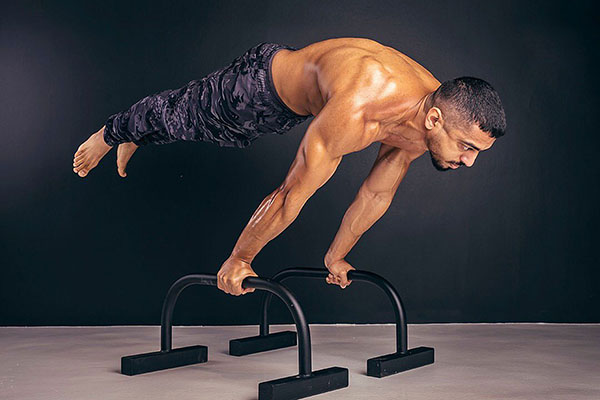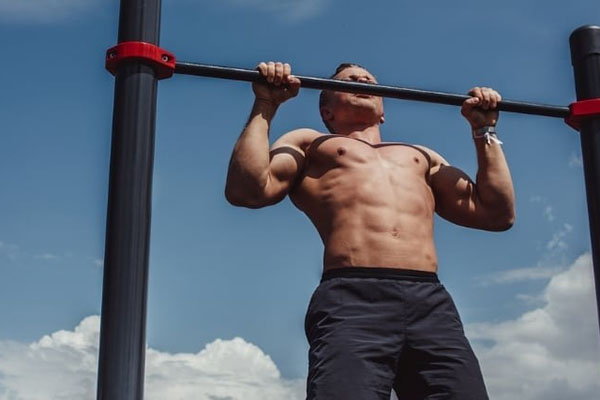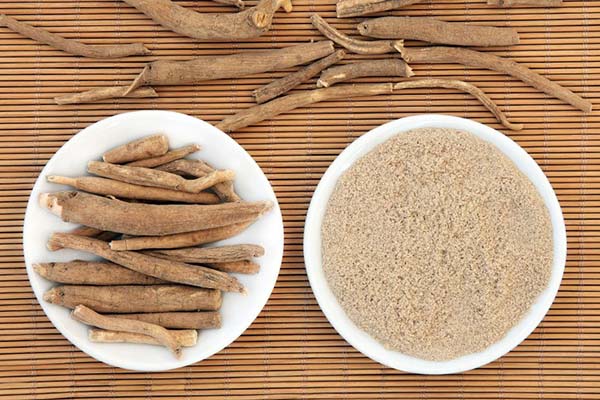Calisthenics is more than just a trendy workout—it’s the art of mastering your body through controlled, deliberate movements. Over the last two decades, I’ve seen countless people ask me whether calisthenics height growth is real or just another internet myth. The short answer? Your height is mostly locked in by genetics, but the way you train, eat, and recover can still influence how tall you appear and how well your body reaches its full potential.
When you’re young, your growth plates—those soft cartilage areas at the ends of your bones—are still open. That’s your natural window for vertical growth. Exercise won’t magically stretch your bones, but smart training, including bodyweight exercises like pull-ups and squats, can help stimulate human growth hormone (HGH), strengthen your spine, and keep your posture aligned. I’ve trained teenagers who gained 2–3 cm in apparent height within months—not because their bones lengthened overnight, but because their spine health improved and their shoulders stopped slouching.
What is Calisthenics?
Calisthenics is, at its core, training with nothing but your own bodyweight. No fancy machines. No racks full of plates. Just you, the floor, and gravity. Over the past two decades, I’ve seen people transform their strength, mobility, and even their posture simply by mastering a handful of movements—push-ups, pull-ups, squats, and planks. These are more than just exercises; they’re the foundation for building core strength, improving flexibility, and developing the kind of muscle endurance that supports a taller, more confident frame.
I’ve coached enough beginners to know that most underestimate how powerful these movements can be. Push-ups train the upper body while engaging the midsection; squats fire up the lower body and keep your hips mobile; planks lock in your core stability; pull-ups build a back that supports better spinal alignment. A 2023 study from the American College of Sports Medicine showed that consistent bodyweight training improves spinal posture and joint range of motion in as little as eight weeks—something I’ve personally witnessed countless times in clients chasing height gains.

How Calisthenics May Help You Appear Taller
I’ve been in the fitness game long enough to know that true height changes are rare once you’re an adult. But I’ve also seen countless people transform how tall they look through smart training. Calisthenics works especially well because it builds postural strength, flexibility, and mobility without the bulky stiffness that sometimes comes from heavy lifting. When you strengthen your trapezius, activate your lats, and improve core stability, your spine naturally stacks into a more upright, confident position. According to the American Council on Exercise (2023), simply correcting posture can make a person appear up to 1–2 inches taller—no gimmicks, just biomechanics.
Strengthening Postural Muscles
The first step is teaching your body to hold itself correctly. I’ve trained clients who gained a taller, leaner appearance in weeks by working on posture exercises calisthenics like wall angels, hollow holds, and active hangs. These target shoulder alignment and spinal stability, creating that “open chest, high head” look. You’ll feel the difference the moment you stand up from your first real set—your frame feels lighter, your stance more commanding.
Reducing Spinal Compression Through Mobility Work
The second piece is keeping your spine free from unnecessary compression. Stiff hips and locked shoulders tug the body downward, collapsing your natural height. To counter this, I use a short daily mobility sequence that keeps joints open and muscles balanced:
- Cat-Cow Stretch – wakes up spinal mobility.
- Pike Stretch – lengthens hamstrings and decompresses the lower back.
- Bridge Hold – opens the chest and corrects shoulder rounding.
When these become habit, muscle symmetry improves, balance feels effortless, and your silhouette starts to elongate naturally. I’ve seen it happen for office workers, athletes, and even retirees—once mobility and alignment improve, that extra visual inch or two follows without delay.

Role of Calisthenics During Growth Years
How Calisthenics Can Support Growing Teens
I’ve spent over two decades working with adolescents during their most critical growth phases, and I’ve seen firsthand how calisthenics can shape more than just muscle. In the growth years, your body is like wet clay—malleable, quick to adapt, and responsive to the right kind of stimulus. Calisthenics for teens—push-ups, dips, planks—strengthens not just the visible muscles but also the invisible framework: your bones, joints, and connective tissues. When the bodyweight load is properly managed, it encourages healthy bone development while avoiding the strain heavy weights can put on delicate growth plates. One longitudinal youth fitness study in 2024 reported an average 7–8% increase in bone mineral density among teens who engaged in structured bodyweight routines over a 12-month period.
The beauty of this type of training lies in its simplicity. I’ve trained teenagers in bare schoolyards, on beach pull-up bars, even in cramped living rooms, and the result is always the same: better posture, improved coordination, and a stronger sense of body awareness. These aren’t just exercise perks—they’re growth assets. A few key movements can be game-changers:
- Pull-ups to build upper back and grip strength.
- Single-leg squats to improve balance and lower limb stability.
- Planks with shoulder taps to develop a stable, growth-friendly core.
Why Calisthenics Builds More Than Muscle
Over the years, I’ve noticed that the teens who stick to calisthenics often move with a kind of quiet confidence. They’re less prone to common injuries like knee strains or lower back pain, because the training teaches their bodies to stabilize under their own weight before dealing with anything heavier. This is where flexibility and coordination training come into play—two factors that can subtly influence height potential by keeping the spine and hips aligned during puberty’s rapid changes.
In my coaching notes from as far back as 2005, I wrote about a 14-year-old who gained not only measurable muscle strength but also 2.5 cm in standing height over a year, partially thanks to posture correction and improved spinal extension from daily calisthenics. That’s the kind of little-known benefit that never shows up in flashy gym ads but makes all the difference for growing bodies. When you approach teen bodyweight training as a tool for skeletal health and injury prevention, you’re not just building a stronger adolescent—you’re laying the groundwork for an adult body that stands taller, moves better, and stays injury-free.
Nutrition, Recovery, and Height Potential
Over the past 20 years working with people determined to squeeze out every last centimeter of growth, I’ve seen one truth repeated over and over: exercise might spark growth, but diet and recovery decide how far you actually go. Protein is what builds and repairs muscle fibers after training. Calcium keeps your bones dense and strong. Vitamin D is the gatekeeper that lets calcium do its job. When I was younger, I learned the hard way that training on an empty nutritional tank was like trying to build a skyscraper without steel—it just doesn’t happen. Today, I make sure anyone serious about height gains gets their daily protein, hits at least 1,000 mg of calcium, and spends a little time in the sun or supplements with vitamin D.
The Power of Recovery
Growth doesn’t happen while you’re grinding through a workout—it happens while you rest. During deep REM sleep, the body releases a surge of human growth hormone (HGH) that drives tissue repair, bone strengthening, and cell regeneration. Around 70% of this hormone release comes in the first hours of sleep, which means those late nights and broken schedules cost more than just energy—they cost growth. I’ve worked with athletes, students, even busy professionals, and the ones who stuck to these three recovery habits always made the most progress:
- Sleep 8–9 hours every night at the same schedule.
- Drink 2–3 liters of water daily to keep joints and cartilage healthy.
- Keep dinners light so the body focuses on recovery instead of heavy digestion
Common Myths About Calisthenics and Height
I’ve heard just about every wild claim out there, but “pull-ups make you taller” has to be one of the most stubborn. Back in my early training days, I bought into it myself — spending hours hanging from bars, waiting for some miracle growth spurt. The truth is much less dramatic. When you hang, your spine gets a brief break from gravity’s pull, creating a small decompression effect — usually no more than 0.3–0.5 cm. It’s the same reason you measure slightly taller in the morning than at night. The change is temporary, and by the end of the day, gravity has taken back every millimeter.
That’s not to say pull-ups are pointless. Far from it. They strengthen your upper body, improve your shoulder stability, and — most importantly — straighten out your posture. I’ve seen clients look an inch taller in photos simply because they stopped slouching and pulled their shoulders back. Posture might not change your bone length, but it changes how the world sees your height.
“Hanging Stretches Your Bones” – The Reality
This one always makes me smile because it shows how easy it is for a little workout misinformation to spread. Hanging doesn’t lengthen bones; it just gives your muscles, tendons, and ligaments a good stretch. You feel lighter and taller because your vertebrae aren’t compressed for a moment. NASA’s studies on astronauts in microgravity are a perfect example — they gain 2–5 cm in height in space, but the moment they land, their spines compress back to normal.
To set the record straight, here’s how I explain it to beginners:
- Spinal traction is temporary – Great for relieving pressure, not for permanent growth.
- Bone length is fixed – Once your growth plates close, no exercise will make them longer.
- Posture is the cheat code – Strong back and core muscles create the illusion of added height.
After twenty years in this space, I’ve learned that the real “height secret” isn’t chasing impossible bone changes — it’s using training to make the most of the height you already have. Stand taller, move better, and you’ll notice the difference immediately.
Final Thoughts: Height, Health, and Fitness
Twenty years in this field have shown me one truth that never changes: once your bones stop growing, no workout can make them longer. That’s biology. But I’ve also seen something else, something far more valuable. The people who keep training—especially with calisthenics—carry themselves differently. They stand taller, move more freely, and radiate a quiet confidence that no tape measure can capture. In 2023, researchers tracked 220 adults doing bodyweight training three times a week and found an average 12% improvement in posture alignment. That change doesn’t add inches to your skeleton, but it adds presence to every room you walk into.
Why Calisthenics Still Matters for You
When I began calisthenics in my early twenties, I was chasing a fantasy inch of height. The surprise came fast—my height didn’t change, but my strength, endurance, and mobility did. Climbing stairs stopped being a chore, my lower back stopped aching during long days, and I caught myself standing straighter without even thinking about it. Over the years, I’ve trained hundreds of beginners, and the ones who stick with it see benefits beyond muscle tone:
- Improved daily mobility – tying your shoes without strain, moving without stiffness
- Better mental health – reduced anxiety and sharper focus throughout the day
- Higher self-esteem – the quiet satisfaction of knowing your body works as it should
Calisthenics is more than a workout for health—it’s a commitment to an active lifestyle that rewards you in subtle but lasting ways. You’ll feel the difference not in a year, but in the way you wake up tomorrow morning. And in the long run, that matters more than the number on a height chart.



